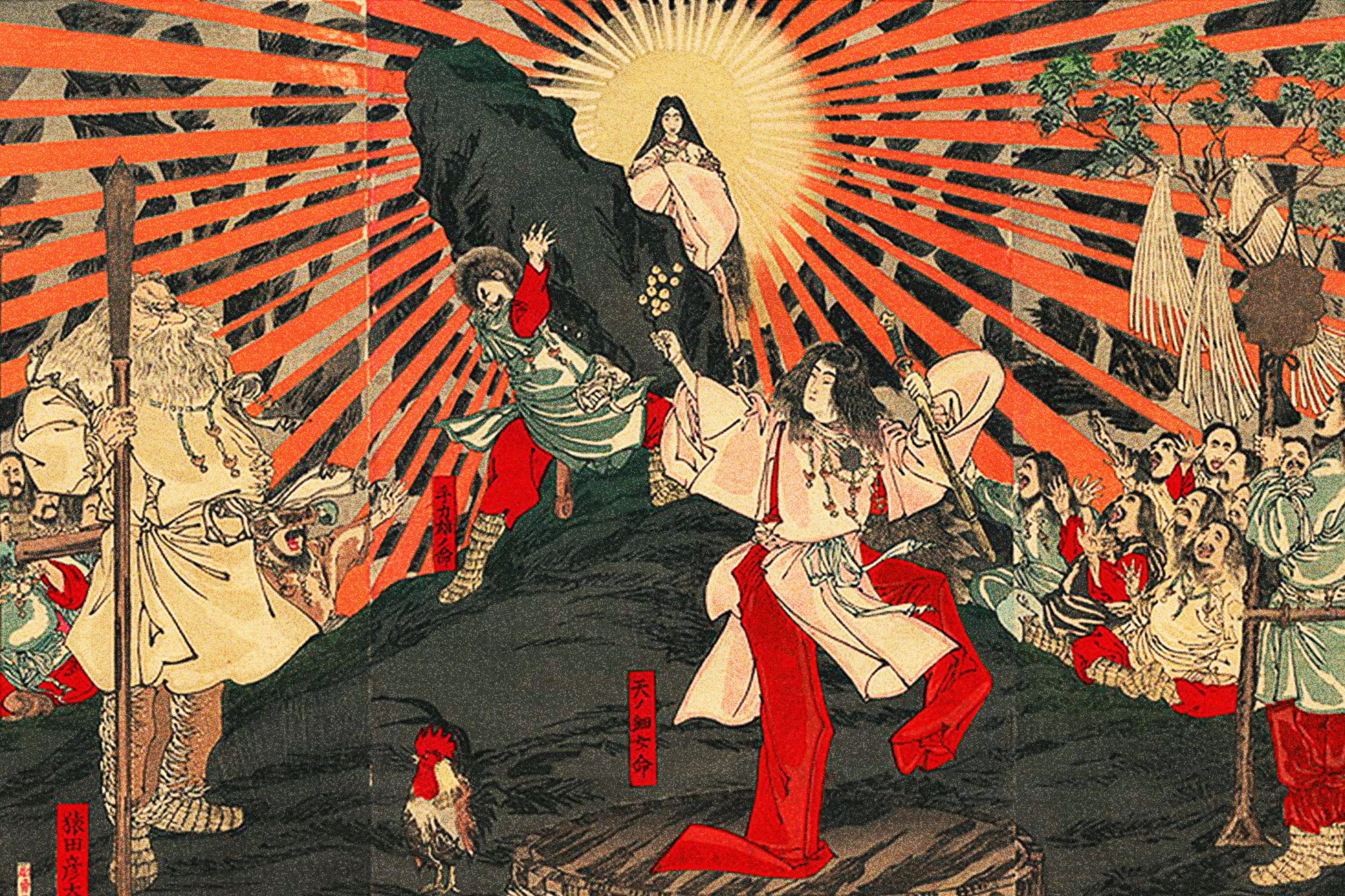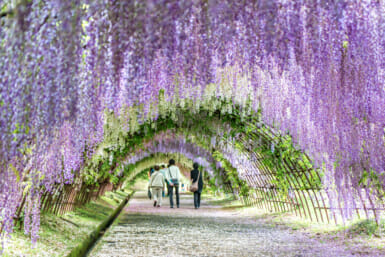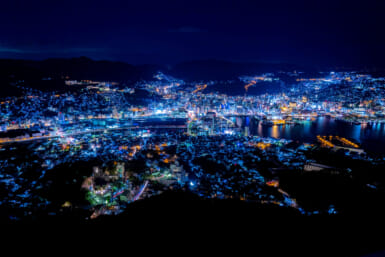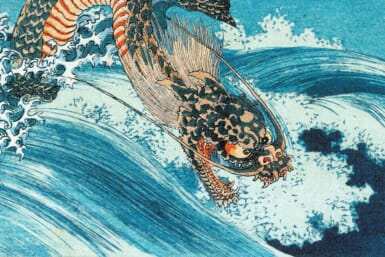Miyazaki, with its mountainous terrain, clear water and dramatic gorges, is the backdrop of many legends in Japan. Perhaps the gods felt drawn to Kyushu’s stunning landscape; they’ve certainly left their sacred footprints on the history and geography of the mystical prefecture. From Amaterasu, the glorious sun goddess, all the way to her godly great-grandchildren who’ve run amok across Miyazaki, here are the stories behind the sacred sites that form the foundation of Japanese mythology.
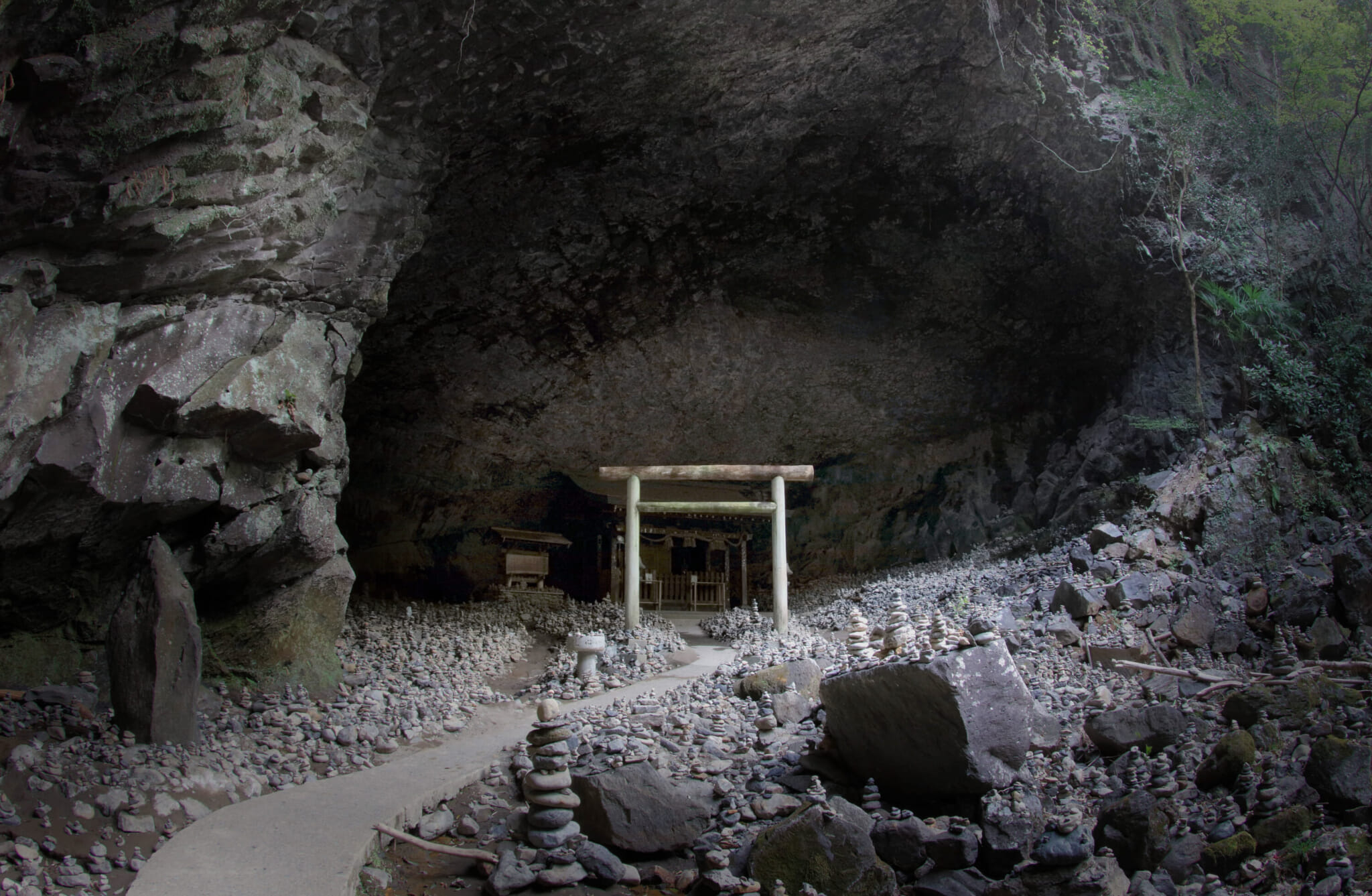
Amano Iwato Shrine
1. Amano Iwato: Where the Sun Came Out of Hiding
According to Shinto legend, the deities Izanagi and Izanami produced the islands of Japan, along with numerous divine children. Among them were Amaterasu-Omikami, the sun goddess, Tsukuyomi-no-Mikoto, the moon god, Susanoo-no-Mikoto, god of storms, and Hi-no-Kagutsuchi, the god of fire. Susanoo was particularly temperamental and frequently meddled with Amaterasu. On one occasion, after an argument, he went on a rampage, destroying her rice fields and killing one of her maidens. Enraged by his actions and grieving her fallen servant, Amaterasu hid herself in Amano Iwato, a shallow cave tucked into the Takachiho Gorge. She pulled a boulder across its entrance, plunging the world into darkness in the absence of her heavenly light.
Earth fell into chaos with Amaterasu gone. Many deities tried their hand to convince her to emerge, but to no avail. Finally, the gods devised a plan: They would throw an incredible party to lure her out. To this end, they placed jewels and a mirror in front of the cave, and began to play music and dance. The action came to a climax when Ame-no-Uzume, the goddess of dawn, put on a performance so tantalizing and entertaining that all the gods burst into laughter and cheers. Curious about the sounds of festivities, the sun goddess peeked out of the cave, and was stunned to see her own blinding reflection. In that moment of surprise, Ame-no-Tajikarao, a god known for his strength, dragged the rock away from the entrance and pulled Amaterasu out, bringing light back to the world.
The modern Amano Iwato Shrine is located just outside Takachiho of Miyazaki Prefecture. Humans are not allowed to enter the central shrine or cave, but upon purification, guests can walk to the back of the outer shrine to witness where the sun goddess hid herself from the world.
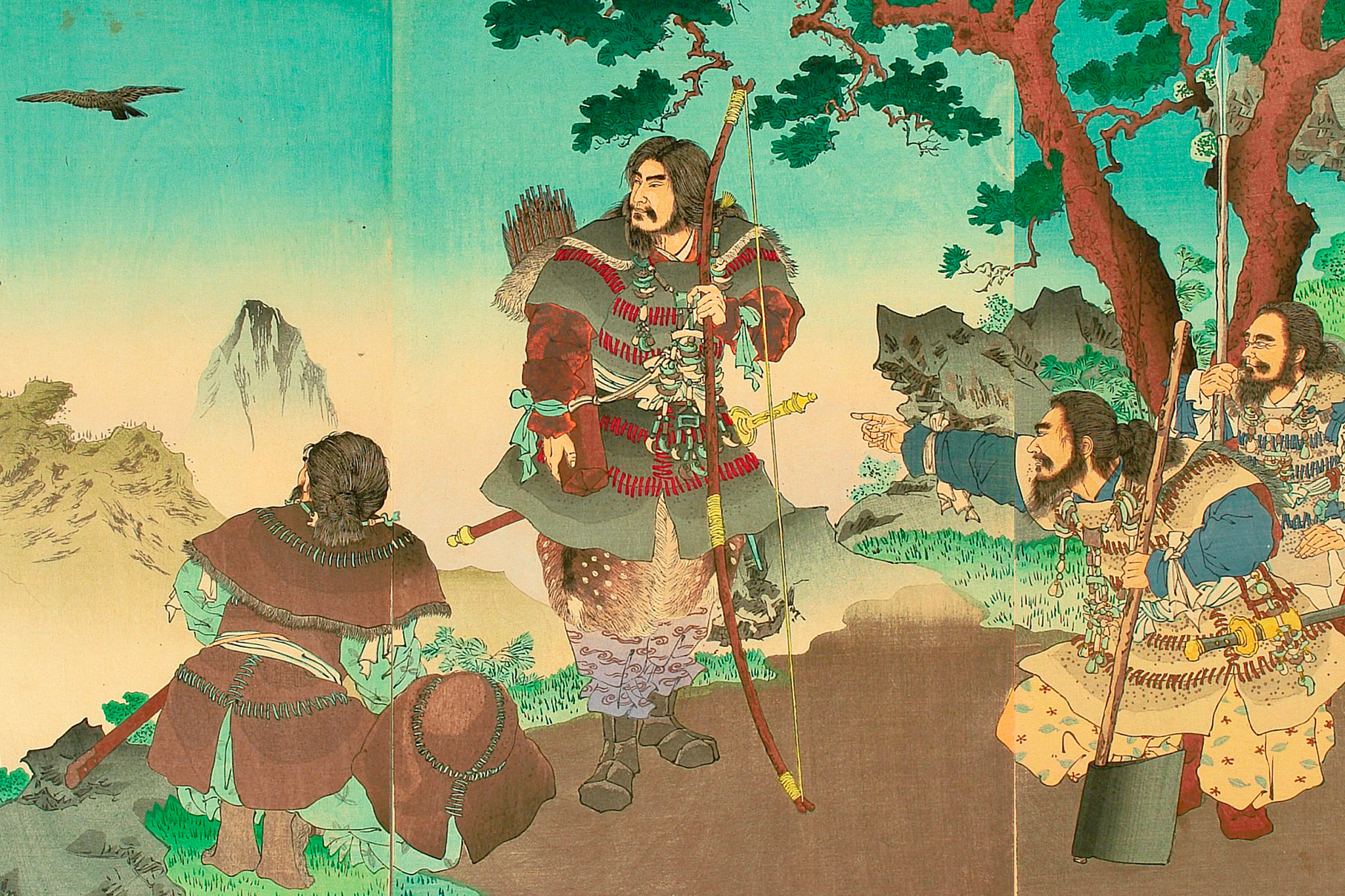
Emperor Jimmu
2. Tenson Korin: The God’s Descent to Earth
A few centuries later, when mortals populated the earth, the gods lamented that the world had once again plunged into an era of chaos. Amaterasu decided that her grandson, Ninigi-no-Mikoto, should leave his celestial home and go to rule the lands. Ninigi prepared for his tenson korin, or his descent from the heavenly realm, bringing along the jewel and the mirror that lured his solar grandmother out of hiding, as well as a sword that Susanoo-no-Mikoto had taken from a ferocious serpent. These treasures are now part of the royal regalia of the Japanese imperial family.
Accompanied by a procession of gods, Ninigi descended to Takachiho-no-Kushifurutake, thought to be the modern-day town of Takachiho. Declaring the land to be good, Ninigi ended the era of turmoil. His great-grandson, Emperor Jimmu, became the first emperor of Japan, thus establishing the country’s imperial lineage.
Kushifuru Shrine in Miyazaki enshrines the venerable Ninigi-no-Mikoto to this day.
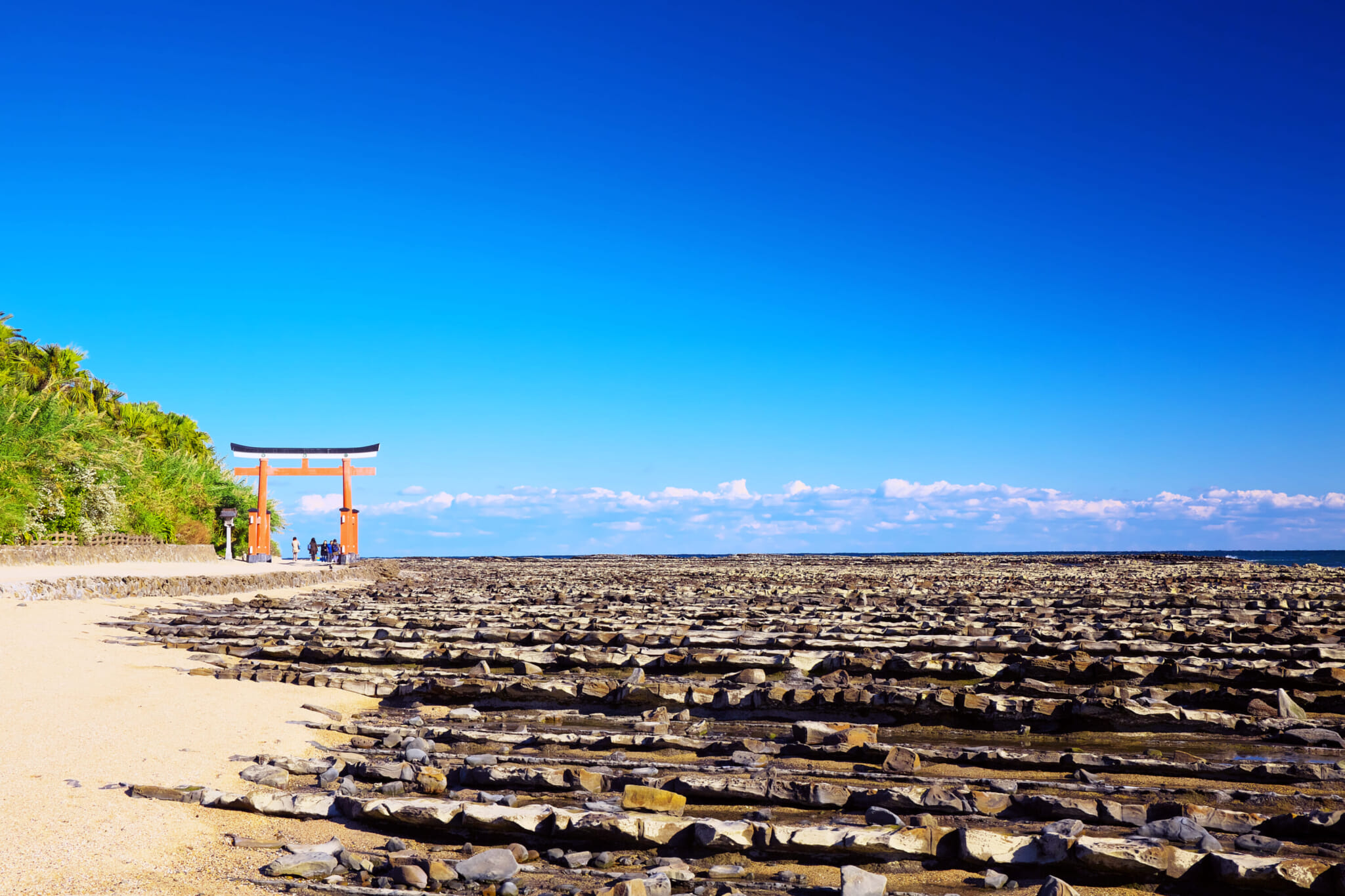
The torii gate at Aoshima Shrine
3. Umisachi and Yamasachi of Aoshima Shrine
Before establishing the royal lineage, Ninigi had three children, including Yamasachi-hiko, a masterful hunter, and Umisachi-hiko, an expert fisherman; to Yamasachi, he bestowed a bow, and to Umisachi he gave a magical fish hook. One day, the two brothers decided to swap their tools to try their hand at each other’s trade. Yamasachi accidentally lost Umisachi’s hook in the seas, and despite his best efforts to recreate it, Umisachi refused to accept any of his brother’s replacements. Eventually a wise, old deity called Shiotsuchi-no-Oji advised the despairing Yamasachi to visit the palace of Wadatsumi, the god of the sea, to ask for his help.
Upon arriving at the palace, Yamasachi instantly fell in love with Princess Toyotama, Wadatsumi’s daughter. The enamored god spent three blissful years in matrimony in the underwater palace before remembering his original intention of retrieving his brother’s hook; with the help of Wadatsumi, who enlisted all the fish in the sea to help in the search, he was at last able to recover it, and returned to land triumphant, bearing his brother’s prized possession along with a pair of mystical orbs — gifts from his father-in-law — with the power to control the tides.
Yamasachi ran to his brother, overjoyed to have retrieved the hook after so many years, but to his disappointment, Umisachi still refused to accept it. The two came to blows, with Yamasachi eventually using the orbs that Wadatsumi had left to him to release great waves that nearly drowned his brother. Umisachi finally relented, allowing Yamasachi to happily return to the land.
The legend of Umisachi and Yamasachi is honored at Aoshima Shrine, an oceanside shrine surrounded by tropical vegetation and sitting alongside the “devil’s washboard” rocky formations. The shrine, famous for its crimson torii gates that contrast against the brilliant blue of the ocean, enshrines Yamasachi, and brings good luck for couples with the blessing of the hunter god and his betrothed princess. Each winter, Aoshima Shrine holds a festival reenacting the return of Yamasachi, and participants wearing solely a loin cloth rush into the shockingly cold waters to be purified by the gods.
This article appeared in Kyushu Weekender 2024. To read the whole issue, click here.

